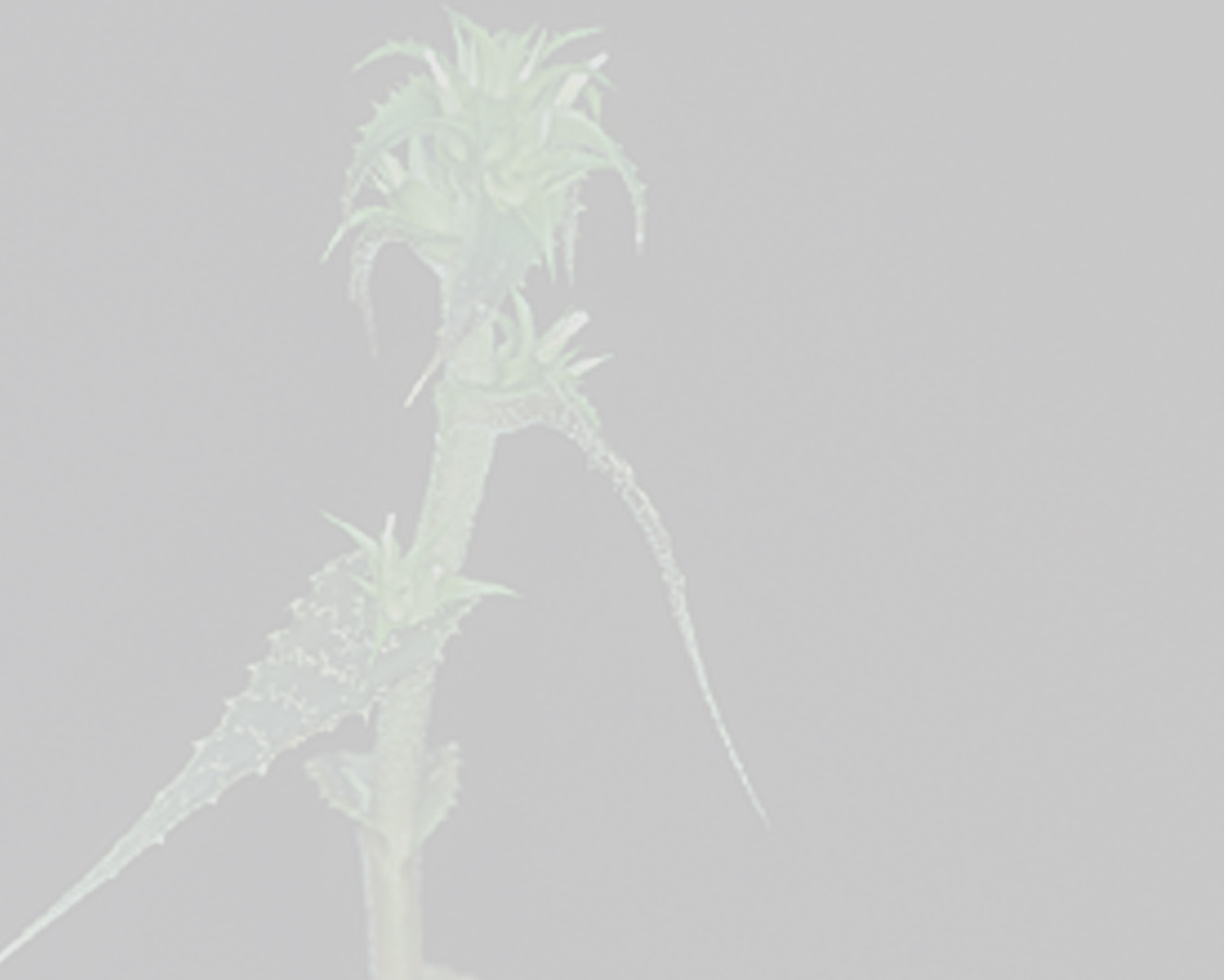

 Orthophytum heleniceae Leme[as Orthophytum heleniceae Leme]
Orthophytum heleniceae Leme[as Orthophytum heleniceae Leme]Diagnose: —Ab O. hatschbachii Leme, cui affinis, foliis perdense spinulosis, spinis usque ad 0.5 mm longis, inflorescentia manifeste composita, bracteis floriferis dense spinulosis, manifeste glandulosis, sepalis longioribus sed angustioribus, manifeste glandulosis, petalis supra basin appendicis apice dense crenulatis ornatis et tubo epigyno ca. 1.5 mm longo differt.A O. navioides (L. B. Sm.) L. B. Sm., cui proxima, planta haud manifeste stolonifera, laminis foliorum latioribus, perdense spinulosis, bracteis floriferis centralibus altitudinem sepalorum superantibus, sepalis distincte brevioribus et antheris apice obtusis differt. Observations: —Orthophytum heleniceae is closely related to O. hatschbachii, but differs by the denser spinulose leaves (spines 1-1.5 mm apart vs. 5-10 mm apart), with smaller spines (to 0.5 mm long vs. 0.5-1.5 mm long), inflorescence distinctly bipinnate (vs. pseudo-simple), floral bract densely spinulose (vs. subentire to inconspicuously spinulose) and distinctly glandulose (vs. not glandulose), sepals longer and narrower (13-15 x 4 mm vs. 8 x 5 mm) and distinctly glandulose (vs. not glandulose), petals bearing densely crenulate appendages (vs. subentire appendages), and by the distinct epigynous tube, ca. 1.5 mm long (vs. lacking). On the other hand, O. heleniceae appears to be related to O. navioides, being morphologically distinguished from it by propagating by means of short basal shoots (vs. long bracteate stolons, 15-20 cm long), leaf blades wider at base (13-15 mm vs. 6-8 mm wide), with denser spinulose margins (spines 1-1.5 mm apart vs. 2-6 mm apart), inner floral bracts longer than the sepals (vs. shorter than the sepals), sepals distinctly shorter (13-15 mm vs. 25-28 mm long), and by the anthers with obtuse apex (vs. apiculate apex).Edited from (09-03-2023): Leme 2004b. (protologue) Studies on Orthophytum - Part II: Two New Scapeless Species .